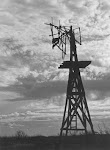Hello Time Travelers,
We are still in the first years of 1800s, on Stony Creek in Bath County,Western Virginia (later to be Pocahontas, West Virginia.) It is 1803, and a young lady, Mary Griffin, of about 19 years is to be married to Hugh Brown. Her father, Benoni Griffin, Jr. died when she was a young teen, and perhaps her mother and step mother as well. The marriage bond states that John and Sally Moore Smith gave consent for the marriage. And our 3Gt Grandfather, Jonathan Griffin, was "surety" which means he guaranteed the bond promised by the groom, as would the nearest male relative. [Older brother, Samuel S., had left the area, and brothers Abraham and Levi were not old enough to sign for her.] This leads us to believe that Mary was taken in by the Smith family of Stony Creek when she was left orphaned. They had 2 or 3 children at the time, so maybe Mary was a nanny, helping Sarah in the home. Later on, Jonathan and wife Rachel purchased land on Stony Creek, living near the Smiths. Mary and Hugh moved to Ohio.
Thinking that the idea of a wedding at the Smith's might be part of our family's history, I found the following narrative taken from Price's "History of Pocahontas County." The original article was written by Georgia C. Shinaberry, submitted by her daughter, Juanita Dilley, Clover Lick West Virginia, May 24, 1940.
"The home of John and Sally Moore Smith on Stony Creek was a place where good times could be had, by the young people, as good times were known in pioneer days. At log rollings, wool pickings, flax scutchings and quiltings, the young people met, fell in love, and did much of their courting. Sunday would be preaching or all day prayer meetings, when it was not deemed right and proper to think or talk of any thing but Heaven and heavenly things.
The grandest social events would be the weddings. These occurred just as fast as the young folks thought themselves old enough to go to themselves. For a long time after the first settlement of this county the inhabitants, as a rule, married young. There was no distinction of rank and very little of fortune. On these accounts, the first impression of love resulted in marriage. A family establishment cost but much labor and nothing else. A glance at a pioneer wedding of the early 1800’s serves to mark the manners of our forefathers, and shows the grade of civilization which has succeeded their rude social condition.
At that time a wedding created a great sensation and attracted the attention of all the people from 12 to 15 miles around. This is not surprising when it is remembered that this was almost the only gathering, aside from church, which was not attended with the labor of reaping, log-rolling, building a cabin or some other labor.
The people came dressed, to the wedding, in their linsey and coarse linen clothes, all homemade. Because there were no stores from which to buy tailored things. Most of them came horseback, with only a girth with an attached stirrup for a saddle. Later leather saddles were made. "
More to come on the social events of the early 1800s.


